An Arizona State University researcher has figured out a way to modify crops to use less water and fertilizer but grow more food, an exciting development as food security becomes a critical concern as the world’s population expands. Roberto Gaxiola, an associate professor with the School of Life Sciences, said his work also enhances a plant’s tolerance to various outside stresses, such as drought or climate change, other factors in feeding the more than seven billion people on the planet.
“Diet, no way!” Those were the three words Lina Begdache, PhD ’08, heard from a colleague when she pitched the idea for an interdisciplinary study of the links between diet and mental health. Her response, “Yes way!” The assistant professor of Health and Wellness Studies within Binghamton University’s Decker School of Nursing didn’t let the negative words discourage her.
Cal Poly senior Zahnae Aquino pulled a virtual-reality headset over her eyes and her office in the university’s California Cybersecurity Institute (CCI) melted away. Aquino, a computer science major, is no stranger to this virtual space — she spent weeks creating it to support the CCI’s effort to fight human trafficking. She is one of nearly a dozen Cal Poly students who spent the past six months working at the CCI on projects intended to help the fight to end human trafficking.
Cal State Fullerton physicist Geoffrey Lovelace is part of the CSUF faculty-student science team that contributed to the breakthrough discovery of gravitational waves, announced one year ago on Feb. 11, 2016 — a century after Einstein predicted their existence in his general theory of relativity. Lovelace and his team of student researchers developed computer simulations and visualizations to better predict the sources of gravitational waves, such as colliding black holes or a black hole tearing apart a neutron star. A second gravitational-wave detection was announced in June.
Clemson University and Auburn University have joined forces to throw the weight of multiple academic disciplines behind efforts to save wild tiger populations worldwide. The two universities, along with Louisiana State University and the University of Missouri, are leading the efforts of the newly formed U.S. Tiger University Consortium, so named for the mascots the institutions share. To Brett Wright, dean of the Clemson University College of Behavioral, Social and Health Sciences, the dwindling tiger populations are an issue demanding the attention of land-grant institutions.
With a heavy mug of coffee in one hand, Todd Anderson moves through his personal studio like a chef moving through a four-star kitchen. Anderson, an assistant professor of art at Clemson University, is a printmaker, skilled at transferring beauty and wonder from landscapes onto paper to share his experiences with the public. “I think we all understand that the world is changing in sweeping and dramatic ways,” Anderson says, his voice quiet and earnest. “My belief is that those places need to be seen, they need to be experienced and they need to be creatively documented.”
Cleveland State University is hosting “College and University Peacebuilding Approaches to Violent Extremism and Youth Recruitment.” The conference will address how people, especially young people, are influenced by hate groups to plan and initiate acts of terrorism. In order to understand what the larger forces are that motivate people to take such extreme measures, we need to closely examine the social structures that lead these youth to join these organizations and the ideological beliefs that motivate them.
Cleveland State University and College Now Greater Cleveland are collaborating on a grant-funded project called (Re)Connect to College to support “comeback” students in earning their degree. Our goal is to recruit, retain, and graduate students in the Cleveland area who have previously stopped out of the university before completing their undergraduate program.
The remarkable work Colorado State University is doing to improve life for the hearing impaired is an example of how the university is developing practical solutions to complex challenges. CSU researchers have developed a new hearing device that bypasses the ear and instead uses a device in a persons mouth that allows the wearer to use their tongue to “hear.”
At Colorado State University, the campus community has been on the frontlines, continuing the University’s land-grant mission of teaching, research, extension, public service and engagement in new and innovative ways to face the challenges head-on.
Dr. Stephen Withrow, founding director of CSU’s world-renowned Flint Animal Cancer Center, has dedicated his life to studying cancers in dogs and other companion animals. And he’s not alone in the fight against this disease. His working relationship with Dr. Ross Wilkins — who treats human patients. Together, Withrow and Wilkins pioneered a limb-sparing technique allowing people with bone cancer to avoid amputation.
How many times have you gone into your pantry or refrigerator, only to find that what you were going to use in your meal was spoiled? The USDA, Cornell University and the Food Marketing Institute are solving that problem with their new app: the FoodKeeper.
Cornell University’s Department of Astronomy is helping to inspire the next generation of astronomers with an online platform that helps children learn about our solar system, the universe, physics, and observational astronomy. The platform is run mostly by graduate student volunteers in the Astronomy Department who are aiming to spark students’ curiosity in the field.
The Georgia Tech Research Institute (GTRI) and CNN have launched a joint research initiative to study the use of unmanned aerial vehicles (UAVs) for newsgathering. The project is now gaining momentum as researchers shift their focus from evaluating UAV equipment to developing potential protocols for safe operations.
Scientists at Indiana University have created a highly efficient biomaterial that catalyzes the formation of hydrogen — one half of the “holy grail” of splitting H2O to make hydrogen and oxygen for fueling cheap and efficient cars that run on water.
For the past decade, beekeepers in the U.S. and Europe have been reporting annual bee and hive losses that are considerably higher than what would be considered normal or sustainable. The term “colony collapse disorder” was coined in 2006 for the unexplained phenomenon of dying bee colonies. At IU, the scientists working on this issue. A Ph.D. student in microbiology, Freddy Lee is part of a lab in the IU Bloomington College of Arts and Sciences’ Department of Biology asking questions that may relate to the global decline in honey bees.
An interdisciplinary research team is using a robot developed at Iowa State University to capture 3D images of corn in the field to better understand leaf angle and how the plant captures sunlight. The research, supported by a $2.5 million National Science Foundation grant, has the potential to boost yields and aid in the engineering of new hybrids to adapt to changes in climate.
NSF grant supports project connecting computer science and engineering course work to community-based problems
Thanks to new funding from NASA, an assistant professor at Montana State University will spend the next three years using data collected from space to help in mapping global biodiversity and charting a course for environmental endeavors across ecosystems, including agricultural systems.
New Mexico State University professor Immo Hansen and graduate student David Price are among 120 scientists from around the world who co-authored a paper about mosquito DNA that may help solve the mystery of why only some mosquito species evolved to transmit deadly diseases like malaria to humans.
When Sangu Angadi was traveling to his science center office in Clovis, New Mexico, one spring day, he was engulfed in the dust of a prairie windstorm. As a crop scientist, Angadi had a pretty good idea of the source of the dust – fallow fields that had dried to powder over the winter months. What he learned later would spur him into seeking new solutions to this decades-long, and worsening challenge.
Researchers at North Carolina State University have built an electric vehicle fast charger that is at least 10 times smaller than existing systems and wastes 60 percent less power during the charging process, without sacrificing the charging time. The team is now building a version that is capable of charging vehicles more quickly, while also charging multiple vehicles at the same time.
Researchers from North Carolina State University and the University of North Carolina at Chapel Hill have developed a drug-delivery system that allows rapid response to heart attacks without surgical intervention. In laboratory and animal testing, the system proved to be effective at dissolving clots, limiting long-term scarring to heart tissue and preserving more of the heart’s normal function.
Over the last decade, Ohio University has established a strong innovation ecosystem in Southeastern Ohio that has helped university inventors and regional entrepreneurs launch startup companies, take new technologies to market, and create jobs. This is especially important in a region that must find a new model of economic development in the wake of the decline of the coal industry, which had been a major job producer for Appalachia for many years.
Professor Jamey Jacob walks into his classroom and begins talking to the room of Oklahoma State University mechanical and aerospace engineering students. Jacob, a member of the Mechanical and Aerospace Engineering faculty in the College of Engineering, Architecture and Technology, checks on the students’ progress with a project. Student teams are testing unmanned aerial vehicles to “deliver” a small package, or payload in industry jargon, and drop it on a target in a flight test.
Oklahoma State University has designated four research areas for focused investment and growth in the coming years, based upon the compelling societal needs that are being addressed. These new programs, selected through a competitive 15-month process, are collectively being labeled Tier 1 Research Initiatives (Timely, Impactful, Engaged Research).
Planting more vegetation, using reflective materials on hard surfaces and installing green roofs on buildings can help cool potentially deadly urban heat islands — a phenomenon that exists in nearly all large cities — a new study from Portland State University shows. Those solutions, however, present a growing challenge to developers and planners as neighborhoods become increasingly dense and single-family homes give way to apartment buildings.
Purdue University engineers and entomologists are making some sweet discoveries about how honeybees build and structure their honeycombs, which could lead to new fabrication techniques taken from the buzzing builders. Nikhilesh Chawla, the Ransburg Professor of Materials Engineering at Purdue, is one of the first to utilize four-dimensional (4D) imaging to delve further into the complexities of the honeycomb.
A grant from the National Institutes of Health (NIH) is helping Sacramento State students contribute to the fight against HIV. The grant recently was awarded to Professor Katherine McReynolds, and it will allow her to expand the student research team (two graduate students and six undergraduates) that is working on a new approach to prevent HIV and AIDS.
A group of window washers exchanged their cleaning tools for masks and capes and transformed into superheroes to brighten the day for these patients. The Penn State Hershey Children’s Hospital, part of the Penn State Milton S. Hershey Medical Center, provides hope and healing to thousands of children and their families each year.
State University of New York Chancellor Nancy L. Zimpher and State Education Department Commissioner MaryEllen Elia announced an historic partnership to address New York’s teaching shortage through the transformation of teacher preparation. According to the Advisory Council’s report, which is available online, New York’s need for teachers will grow by 5.8 percent by 2022, or an average of 1,700 teachers per year
Often described as the modern day Indiana Jones, Parcak uses infrared imagery from satellites to uncover ancient archaeological sites. A pioneer of space archaeology, she has earned acclaim for being among the first to apply satellite imaging to locate archaeological sites in Egypt. A professor at the University of Alabama at Birmingham, where she founded the Laboratory for Global Observation, a TED Fellow, and National Geographic Fellow, Parcak gained international attention for satellite mapping all of Egypt and unearthing 17 potential unknown pyramids, 1,000 tombs and 3,100 settlements.
Uniontown, Ala., a low-income, predominantly black community located in the state’s Black Belt, made the national news back in 2010, when 4 million tons of coal ash were shipped to its Arrowhead Landfill in the wake of a dike rupture at the Tennessee Valley Authority’s Kingston Fossil Plant. As telltale signs of contamination began to pile up, word made its way to Dr. Azita Amiri, an assistant professor in the College of Nursing at The University of Alabama in Huntsville (UAH) who serves as the chairwoman of the Alabama State Nurses Association’s Environmental Taskforce.
Shristi Shrestha is both literally and figuratively a long way from her days as an undergraduate student conducting research on medicinal plants. The Nepalese native left her homeland in 2012 to earn her Ph.D. in biotechnology science and engineering from The University of Alabama in Huntsville (UAH) and has managed to acquire an enviable expertise in genetic research since then. “It’s a very humbling experience to remember being so new to research to now doing genomic research that is important for understanding life-threatening diseases,” she says.
A University of British Columbia-led research team has developed a new global coral bleaching database that could help scientists predict future bleaching events. Until now, knowledge of the geographic extent of mass coral bleaching has been incomplete. To build the database, the researchers scoured academic journals, government documents and other sources for reports of coral bleaching missing from an existing voluntary database commonly used by scientists. Then, they personally contacted local experts in places where they suspected coral bleaching had occurred.
A new study by UGA ecologists has found that sedentary winter-breeding butterflies are at increased risk of disease. But, for the monarchs at least, there may be a relatively simple solution.
The University of Georgia has signed a contract with the National Institutes of Health for an initial award of $8 million to develop a new, more advanced influenza vaccine designed to protect against multiple strains of influenza virus in a single dose. The total funding could be up to $130 million over seven years if all contract options are exercised.
Building on its continued growth in research and innovation, the University of Georgia ranked first among 193 U.S. institutions for the number of commercial products reaching the market in 2017, according to a survey released by AUTM, a nonprofit organization that tracks technology transfer among universities, colleges and other research institutions. In 2017, 52 new products based on UGA research reached the market.
Eugene Odum was not given to fits of anger, but this time he was furious. It was the fall of 1946. Odum, then a young associate professor in the University of Georgia’s biology department, had taught a course on ecology for several semesters and was passionate about the subject. In a meeting with his colleagues, Odum suggested that his ecology class be required of all new biology majors. His fellow scientists looked at him and laughed. Odum stormed out of the room but was not deterred. That night, he began writing a guiding set of principles that would ultimately serve as the foundation for the discipline’s first textbook.
If our newly formed nation had to pick a Founding Father to transform higher education across America — and create a critical pillar of our fledgling democracy — Abraham Baldwin would have been an unlikely choice. The son of a Connecticut blacksmith, Baldwin was only 30 years old when he crafted one of the most groundbreaking documents in our nation’s early history — the charter that established the University of Georgia as the birthplace of public higher education in America.
More than 250 federal and state officials, business executives, University of Maine System leaders and community members were on hand to witness the UMaine Advanced Structures and Composites Center receive three Guinness World Records on Oct. 10 for the world’s largest prototype polymer 3D printer, largest solid 3D-printed object, and largest 3D-printed boat. The event culminated with the world’s largest 25-foot, 5,000-pound 3D-printed boat, named 3Dirigo, being tested in the Alfond W2 Ocean Engineering Laboratory, an offshore model testing facility equipped with a high-performance wind machine over a multidirectional wave basin.
Maine’s Clark Cove has long been a farming community. The 40-acre inlet on the Damariscotta River estuary, six miles up the state’s rocky coast, is home to numerous farms, and a diversity of crops. But what’s most notable is the way the crops are grown. Underwater. With clean, cold and nutrient-rich waters, the estuary — where freshwater and saltwater ecosystems meet — is an ideal environment for growing marine animals and plants, including oysters, mussels, clams and sea vegetables.
LoboScape is a visual installation welcoming travelers to Albuquerque. Projected onto a custom fabricated display, it uses the latest technology in visual arts to tell the story of The University of New Mexico and its people.
Some of the planet’s tiniest organisms are visible from space. Phytoplankton — single-celled, water-dwelling algae — are one-millionth of a meter in size and produce about half the oxygen we breathe. Millions of phytoplankton swirl around in jugs of seawater, collected just moments before from the Equatorial Pacific Ocean. “These vessels don’t have the equipment we usually use to do our work, so we had to improvise,” Adrian Marchetti, a UNC-Chapel Hill oceanographer, says with a laugh.
“My first reaction when NASA reached out to me was to ask if I could visit the International Space Station to examine the patient myself,” said Dr. Stephan Moll, UNC School of Medicine blood clot expert and long-time NASA enthusiast. “NASA told me they couldn’t get me up to space quickly enough, so I proceeded with the evaluation and treatment process from here in Chapel Hill.”
It’s midnight. Kayla Goforth and her research assistants have been traveling by car, boat and even golf cart for some seven hours to get to Bald Head Island — but the work is just beginning. They get into a utility task vehicle and head to their field site: the nest of a loggerhead sea turtle. A biology doctoral student in Ken Lohmann’s lab at Carolina, Goforth studies the magnetic orientation of loggerhead sea turtle embryos. Scientists already know that sea turtles navigate using a sense called magnetoreception, allowing them to detect slight fluctuations between Earth’s magnetic fields at different latitudes and longitudes.
On several grassy acres near I-29 owned by the University of North Dakota Aerospace Foundation, aerospace engineer and UND Aerospace faculty member Pablo de León leads a student team that’s assembled a series of “space” modules meant to simulate the closed environment of a planetary station. In this case, Mars. It’s all part of an ongoing research project—the only one like in the nation—funded by the National Aeronautics and Space Administration (NASA) as part of its ambitious long-term plan to establish a human colony on Mars.
Despite great technological advances in ocean exploration over the last 30 years, the world’s most delicate deep-sea species largely remain a mystery. There has been little development in instruments that can be used to identify and safely collect fragile undersea species. That’s about to change. Brennan Phillips, University of Rhode Island assistant professor of ocean engineering, has made significant advancements in the field of soft robotic grippers that can be used to gently grasp these obscure creatures.
In the first collaboration of its kind, The University of Texas System and the United States Census Bureau have signed a 10-year partnership agreement that will provide both organizations a more comprehensive picture of degree attainment and how it impacts labor market outcomes. These data will include earnings, region and industry of employment, migration patterns and career pathways for UT graduates from 2003 to present. The pilot research project will provide important insight for the LEHD program into the feasibility of future large-scale education research projects for the Census Bureau.
Altitude Lab announced its first resident companies and opened applications for its breakthrough collaborative facility and program. Founded by Recursion and the University of Utah’s Center for Technology & Venture Commercialization (TVC), the incubator fills the critical role of finding, supporting, incubating and accelerating early-stage life science and health care companies in Utah. Altitude Lab is the first of its kind—a blended incubator/accelerator program focused on developing diverse and inclusive businesses in the health care sector.
Bring science to people where they are. That’s the driving philosophy that propels U biology professor Nalini Nadkarni to stretch the possibilities of science communication and bring the beauty of science to people and places that others have overlooked. Building public trust in science is about more than just providing information and improving science literacy, she says. It’s about building relationships between scientists and communities that are founded on shared values. It’s called the “Ambassador Model”, and Nadkarni now has the data to say that the approach works, at relatively low cost and with high effectiveness.
What if someone invented a smartphone app that could help detect autism spectrum disorder (ASD) in children as young as 2 years old? Could it lead to earlier detection and therefore better treatment? A study co-authored by a University at Buffalo undergraduate and presented at the IEEE Wireless Health conference at the National Institutes of Health last month could provide the answer.
New findings from NASA’s Mars Reconnaissance Orbiter provide the strongest evidence yet that liquid water flows on present-day Mars. Using the orbiter’s High Resolution Imaging Science Experiment (HiRISE), managed at the University of Arizona, former undergraduate Lujendra Ojha first discovered possible water-related streaks on the red planet’s slopes in 2010.
The University of Arizona-led OSIRIS-REx mission will land a spacecraft on a near-Earth asteroid and return with samples for analysis. Scheduled for 2016, OSIRIS-REx will yield clues to our solar system’s origin and how to develop asteroid impact mitigation systems.
The development of personalized medicine to treat diseases depends heavily upon a highly detailed level of understanding of biological processes that are inherently difficult to measure. Now, nanomaterial technology developed at the University of Arizona and licensed to startup Scintillation Nanotechnologies is making it possible for scientists to take a closer look at the processes that drive diseases in order to improve patient outcomes.
Researchers of the globe-spanning Event Horizon Telescope collaboration unveiled the first direct visual evidence of a supermassive black hole and its shadow. Taking a direct image of the black hole in M87 is a feat that would not have been possible a decade ago. It’s like “taking a picture of a doughnut placed on the surface of the moon,” according to EHT Project Scientist Dimitrios Psaltis, a professor of astronomy and physics at the University of Arizona.
A UA-led team is pilot-testing the diabetes prevention program EPIC (Encourage, Practice, and Inspire Change) Kids at two YMCA locations. The program is modeled after the successful and national YMCA’s Diabetes Prevention Program for adults, and is also aiming for national implementation. Each year in the US, more than 5,000 people under 20 are newly diagnosed with diabetes and about one in five children are obese.
Removing a cancerous tumor is only one-tenth of the job. Tracking cancerous cells to the points where they have metastasized and delivering immune-boosting substances to those locations takes a sleuth like David Zaharoff. In recent experiments, Zaharoff’s University of Arkansas Laboratory of Vaccine and Immunotherapy Delivery team has eradicated bladder tumors in mice
As you watch The Walking Dead, consider the possibility that zombies are real and may be in your yard right now. No kidding, you should go look. I’ll wait. If you didn’t see them, you likely were looking too big. The zombies in question are beetles. You can call them “zombeetles” if you like. Don Steinkraus won’t mind. Steinkraus, professor of entomology for the University of Arkansas System Division of Agriculture, has been studying the interaction of Eryniopsis lampyridarum, a fungal pathogen, and goldenrod soldier beetles for decades.
It’s a popular question: What did you do over the summer? For Lubaba (Aurna) Khan, the summer of 2018 will be one she will never forget. Khan spent the summer hunched over a computer interpreting free, publicly accessible health and genomics data. “Bioinformatics is the new frontier of medical science,” says Khan. She was comparing the differences between genes found in cancer cells and those found in normal cells. Working under the guidance of Bose, Khan learned how to construct questions and hypotheses. It was a bumpy start.
Long before dating sites, a pair of economists delved into the question of matchmaking, and hit upon a formula with applications far beyond romance. Would you let an economist set you up on a date? In the 1960s, researchers David Gale and Lloyd Shapley embarked upon federally-funded research to take up an unlikely subject: matchmaking. The real breakthrough came in 2004. That is when Roth developed the matchmaking principle to help transplant patients find donors.
The University of California unveiled the University Climate Change Coalition, or UC3, a bold new coalition of 13 leading North American research universities that will prototype a collaborative model designed to help local communities achieve their climate goals and accelerate the transition to a low-carbon future. In launching UC3, an initial cohort of distinguished universities from the United States, Canada and Mexico has committed to mobilize their resources and expertise to accelerate local and regional climate action in partnership with businesses, cities and states.
UC Davis researchers discovered a new way to address a troubling disorder in newborn horses and are also exploring possible connections to childhood autism.
What kinds of weather do people find remarkable, when does that change, and what does that say about the public’s perception of climate change? A study led by the University of California, Davis, examined those questions through the lens of more than 2 billion U.S. Twitter posts. The study indicates that people have short memories when it comes to what they consider “normal” weather.
When Brian Bird and his team from the Centers for Disease Control arrived at the hospital in Kenema, Sierra Leone, during the 2014 Ebola outbreak, half the hospital’s staff were dead or missing from work. “Ebola outbreaks have the singular ability to reveal how fragile our systems are,” Bird said. “We depend on people caring for each other, and Ebola preys on this because it puts caregivers at extreme risk.” Bird, a graduate of the University of California, Davis, School of Veterinary Medicine, helped coordinate operations of the U.S. government’s diagnostic labs in the region during the outbreak, which sickened at least 28,000
When two adult female black bears were burned during a fire in California, UC Davis veterinarians came up with an innovative treatment for the burned bear paws. Deana Clifford, an assistant clinical professor at the UC Davis School of Veterinary Medicine, and Jamie Peyton, chief of the Integrative Medicine Service at UC Davis Veterinary Medical Teaching Hospital, were the first veterinarians in the nation to use tilapia fish skins to heal burn wounds on wild animals. The treatment has potential for future use on animal and human burns.
A team of interdisciplinary researchers at UCLA has been working on a unique solution that may help eliminate sources of greenhouse gases. Their plan would create a closed-loop process: capturing carbon from power plant smokestacks and using it to create a new building material that would be fabricated using 3D printers. “What this technology does is take something that we have viewed as a nuisance — carbon dioxide that’s emitted from smokestacks — and turn it into something valuable,” said J.R. DeShazo, professor of public policy at UCLA.
There are millions of children in the world without limbs because of medical conditions or as a result of war. UCF engineering students are taught how to think beyond formulas to solve problems. That’s how some engineering students in their spare time began creating 3D arms for children for less than $350. They are giving children and their families hope. They are using their knowledge to solve problems. They are making a difference. They are UCF Knights.
A University of Central Florida chemistry professor has just found a way to trigger the process of photosynthesis in a synthetic material, turning greenhouse gases into clean air and producing energy all at the same time. The process has great potential for creating a technology that could significantly reduce greenhouse gases linked to climate change, while also creating a clean way to produce energy.
Through initiatives such as Next Generation Connecticut (NGC), UConn is making unprecedented moves to unleash the solutions of tomorrow. Investments in research and economic development allow UConn to expand innovation and create breakthroughs in areas such as additive manufacturing, genomic medicine, and cybersecurity.
Through initiatives such as Next Generation Connecticut (NGC), UConn is making unprecedented moves to unleash the solutions of tomorrow. Investments in research and economic development allow UConn to expand innovation and create breakthroughs in areas such as additive manufacturing, genomic medicine, and cybersecurity.
The University of Florida today announced a public-private partnership with NVIDIA that will catapult UF’s research strength to address some of the world’s most formidable challenges, create unprecedented access to AI training and tools for underrepresented communities, and build momentum for transforming the future of the workforce.
Karen Wright worked her way through the small gathering outside her 4-month-old daughter’s room in pediatric intensive care. It seemed to her as if everyone at UF Health Shands Children’s Hospital had come to witness this historic moment. Wright leaned down and whispered to her baby, “This drug is going to save your life.” Londyn became the first baby in the country treated with a newly approved gene therapy for a rare and debilitating neuromuscular disease since it won federal approval in May.
An easy-to-use saliva test to screen for the parasite that causes malaria has been developed by a team of researchers led by a University of Florida scientist. The non-invasive “spit test” could be a key tool in efforts to eradicate malaria, which kills a child every two minutes, says UF infectious diseases researcher Rhoel Dinglasan. The study on the test was published today in Science Translational Medicine.
When the green sea turtle named Cisco Kid washed up on Hammock Beach in Palm Coast, it seemed his luck had run out. He was anemic, underweight, fighting a blood infection, stunned by the January cold, too weak to swim or eat. Tumors beneath his back flippers sapped his energy, robbing his blood supply and hindering his movement. One thing was in Cisco’s favor, though: He had come ashore just a few miles from the University of Florida’s Whitney Laboratory Sea Turtle Hospital in St. Augustine.
Realizing Increased Photosynthetic Efficiency (RIPE) is an international research project that is engineering crops to be more productive by improving photosynthesis, the natural process all plants use to convert sunlight into energy and yields. By equipping farmers with higher-yielding crops, we can ensure that everyone has enough food to lead a healthy, productive life.
Chlorella Vulgaris sounds like a Disney villainess, but it’s actually the star of a story that until recently sounded like a fairy tale: use algae to turn wastewater into clean fuel. But that’s exactly what University of Kansas faculty and student researchers are doing.
Understanding the future of the world’s largest ice sheets, including Greenland and Antarctica, requires taking a look underneath the surface. Scientists are examining the Earth’s polar ice using key research and radar instruments from the Center for Remote Sensing of Ice Sheets (CReSIS) at University of Kansas. The ice-penetrating radar from CReSIS discovered an ancient map of rivers below the surface of Greenland, helping scientists predict the ice’s future in the face of global warming.
The U.S. Army uses artificial intelligence systems related to search-and-rescue, surveillance, robots and machinery, and helping to perform decision-making tasks. Now, UMBC is partnering with UMD and the DEVCOM Army Research Lab on a $68-million, five-year endeavor to strengthen Army AI technology, making it more secure, effective, and resilient.
The golden retriever puppy gazed up at Abel Rosas with adoring eyes, then tried to clamber into his lap. It was 2008, two wars were boiling in the Middle East, and he belonged over there with his fellow infantrymen hunting terrorists. Not playing with a dog in a California post-traumatic stress disorder (PTSD) treatment center.
It might sound like science fiction, but University of Maryland scientists are developing robots that can teach themselves…from watching videos on YouTube.
Baoshan Xing, an environmental and soil chemist at the University of Massachusetts Amherst, is an expert in analyzing the chemical behaviors of soil and soil contaminants. As a most highly cited researcher, Xing works on issues of soil health and soil remediation. His groundbreaking research seeks to improve soil health to produce safer food.
An outdoor fly lab for testing autonomous aerial vehicles is open for use at the University of Michigan College of Engineering. M-Air will let researchers and students safely push algorithms and equipment to their limits, says Ella Atkins, professor of aerospace engineering. “I believe M-Air will rapidly become an incubator for new aerial vehicle concepts,” Atkins said. “With this facility, we can pursue aggressive educational and research flight projects that involve high risk of fly-away or loss-of-control—and in realistic wind, lighting and sensor conditions.”
Farmers and plant breeders can now build their own automated field camera track system to collect data on dynamic plant traits, such as crop lodging and movement, as it’s happening in the field to help reduce losses in crop yield. A team of University of Minnesota researchers led by Alex Susko, doctoral candidate and member of the Precision Agriculture Center in CFANS, developed the system to capture videos of plant movement under very windy conditions as well as stem failure or lodging.
Substance abuse affects 24 million Americans, and the goals of controlling chronic pain without causing addiction and preventing relapse have proved elusive. The University of Minnesota is identifying the root causes of relapse and creating better painkillers to end addiction. “One of the things we were interested in is: how does the brain recover when people stop using drugs?” says Kelvin Lim, professor of psychiatry at the University of Minnesota. Learning to predict who has the highest risk of relapse will help focus prevention efforts.
A 550 million-year-old fossilized digestive tract found in the Nevada desert could be a key find in understanding the early history of animals on Earth. Over a half-billion years ago, life on Earth was comprised of simple ocean organisms unlike anything living in today’s oceans. Then, beginning about 540 million years ago, animal structures changed dramatically. An analysis of tubular fossils by scientists led by Jim Schiffbauer at the University of Missouri provides evidence of one of the oldest known examples of fossilized internal anatomical structures and reveals what scientists believe is a possible answer to the question of how these animals are connected.
Obesity is a big problem, and UNLV biologist Allen Gibbs has enlisted millions of six-legged volunteers to help him figure out the genetic basis of a plight that affects an increasing number of Americans. For nearly a decade, Gibbs has been breeding the world’s fattest fruit flies to investigate how they adapt – or don’t – to stressful environments.
The Environmental Health & Safety department, part of Research & Innovation at the University of Nevada, Reno, is one of the first in the nation to provide a campus lab space dedicated solely to safety training. In the past, safety training has been conducted online and through lecture, but the addition of the new Safety Training for Academic Research Lab or STAR Lab adds a more interactive and hands-on format. “The lectures we have been doing for the past years have been good training, but I always thought we could do better,” Ben Owens, assistant director of laboratory safety, said. “Some people do a lot better with hands-on kinds of training.”
At the University of New Hampshire’s Organic Dairy Research Farm, UNH researchers have launched an innovative composting program that provides a high-quality compost product and captures the heat energy for use elsewhere on the farm. It’s part of University Professor John Aber’s work looking beyond the cows to see the farm as an agroecosystem. The project is supported by the USDA Program on Sustainable Agriculture Research and Education (SARE) and the NH Agricultural Experiment Station, and the Joshua Nelson Energy Recovery Compost Facility was funded by an anonymous donor.
Through the largest grant in the University’s history, a pair of researchers from the UNC Charlotte Cato College of Education are expanding their national effort to improve employment, education and community integration for students and youth with disabilities.
Malaria is a global health crisis that affects an estimated 219 million people and kills 435,000 per year, numbers that evolutionary scientists like University of Oregon’s Andrew Kern are trying to change. In the past, pesticides were one weapon used against mosquitoes that spread the disease. But as such methods become less effective, Kern and other researchers are taking a new approach to preventing the spread of malaria by examining variation in the genomes of mosquitoes.
Breakthrough findings on tuberculosis by researchers at the University of Pittsburgh have attracted national scientific acclaim. Worldwide, more people die from tuberculosis (TB) than any other infectious disease, despite the majority being vaccinated—the current vaccine just isn’t that reliable. But a new study published in Nature found that simply changing the way the vaccine is administered could dramatically boost its protective power.
As associate medical director of clinical immunopathology at the University of Pittsburgh Medical Center, Sarah Wheeler has received many calls from clinicians about diagnostic testing in the hospital, including those dealing with human immunodeficiency virus. She and her team are now working to develop a testing device that will be able to determine in one minute whether a patient is infected with HIV.
Through the University of Washington’s School of Aquatic and Fishery Sciences, Sarah Schooler, ’15, spent six weeks in the Alaskan bush, collecting the same data in the field she’d been studying in the classroom: salmon and the hungry habits of grizzly bears.
As he secures microscopic evidence from the world’s coldest places for his research on the Earth’s climate, University of Washington Ph.D. candidate Brad Markle also uses his artistic eye to capture photographs of some of the planet’s most desolate landscapes.
As scientists pin down the origin, governments enact prevention measures and labs look for a cure, news about the outbreak of the novel coronavirus often comes down to two questions: Where and how many people are infected? A new interactive map from University of Washington geographer Bo Zhao aims to answer those questions in real time. Zhao produced this interactive map of the coronavirus, which updates every few hours with data from the Centers for Disease Control and Prevention, the World Health Organization, the People’s Republic of China, and other government agencies, including those in Hong Kong, Macau and Taiwan.
About 1 million adults in the United States need someone to help them eat, according to census data from 2010. It’s a time-consuming and often awkward task, one largely done out of necessity rather than choice. Researchers at the University of Washington are working on a robotic system that can help make it easier.
Environmental disasters in the U.S. often hit minority groups the hardest. Massive wildfires, which may be getting more intense due to climate change and a long history of fire-suppression policies, have strikingly unequal effects on minority communities, a new study shows.
The stout house built into a hillside in Jayuya, a rural municipality in the mountains of central Puerto Rico, hasn’t been connected to the electrical grid for six months. Someone inside suffers from sleep apnea, and his family has relied on a noisy generator — and the gas it consumes — to power the machine he needs each night. Outside, under the thin smile of a crescent moon, four engineers from the University of Washington complete their work. Soon a new solar/battery nanogrid will power the sleep-aid machine: no gas, no fumes, no cacophony.
In October 2015, a team of researchers at the University of Wisconsin—Madison and Universidad de Sucre in Colombia ran the first tests confirming the presence of Zika virus transmission in the South American country. In a study published today (Jan 26, 2016) in the journal Emerging Infectious Diseases, the team documents a disease trajectory that started with nine positive patients and has now spread to more than 13,000 infected individuals in that country.
Working in a cave complex deep beneath South Africa’s Malmani dolomites, an international team of scientists has brought to light an unprecedented trove of hominin fossils — more than 1,500 well-preserved bones and teeth — representing the largest, most complete set of such remains found to date in Africa.
Along with flying and invisibility, high on the list of every child’s aspirational superpowers is the ability to see through or around walls or other visual obstacles. That capability is now a big step closer to reality as scientists from the University of Wisconsin–Madison and the Universidad de Zaragoza in Spain, drawing on the lessons of classical optics, have shown that it is possible to image complex hidden scenes using a projected “virtual camera” to see around barriers.
The quest to understand our beginnings — of our universe, of life on Earth, of our species — inspires people all over the world. At the University of Wisconsin–Madison, researchers have forged partnerships with colleagues in South Africa and are uncovering answers and opening new scientific frontiers. Explore the origins of our universe, life on earth, and humankind.
To study the swiftness of biology – the protein chemistry behind every life function – scientists need to see molecules changing and interacting in unimaginably rapid time increments, trillionths of a second or shorter. A team of physicists from the University of Wisconsin-Milwaukee has completed the European X-ray Free-Electron Laser facility’s first molecular movie, or “mapping,” of the ultrafast movement of proteins.
In two papers published in Nature this month, two USU biochemists have described the structure and function of a newly discovered CRISPR system that shuts down infected cells to thwart infection.
Virginia Tech pushes the boundaries of knowledge by offering a hands-on, transdisciplinary education to students and by conducting more than $550 million in research. Virginia Tech offers the widest range of degree choices in Virginia to more than 37,000 students in eight undergraduate colleges, a school of medicine, a veterinary medicine college, Graduate School, and Honors College. The university has a significant presence internationally and in Virginia, including the Innovation Campus in Northern Virginia and the Health Sciences and Technology Campus in Roanoke.
The concept of a weather forecast doesn’t make you think twice, but a flu forecast? Now that might cause you to do a double-take. While the science of weather forecasting has been accepted as a standard feature of smartphones and newscasts for years, flu forecasting — or, for that matter, disease forecasts in general — haven’t been as easily accessible. That, however, is a situation researchers at the Biocomplexity Institute of Virginia Tech plan to change.
To better identify and prevent future pandemics, WSU has entered into a cooperative agreement with the U.S. Agency for International Development (USAID) to head up a new five-year, approximately $125 million global project.
A robot created by Washington State University scientists could help elderly people with dementia and other limitations live independently in their own homes. Currently, an estimated 50 percent of adults over the age of 85 need assistance with every day activities such as preparing meals and taking medication and the annual cost for this assistance in the US is nearly $2 trillion.
Yanfang Ye, assistant professor of computer science and electrical engineering at West Virginia University, has been awarded a grant from the National Institute of Justice in support of her work to develop novel artificial intelligence techniques to combat the opioid epidemic and trafficking. “As of today, we still lack deep insight into the online ecosystem of opioid trafficking,” said Ye. “In addition to offline data, utilizing AI technologies to obtain knowledge and recognize patterns from online data across the darknet and surface net could provide leads.
West Virginia University researchers uncovered an emissions cheating scandal that made headlines around the world, but the real story is how their work will create safer, healthier cities. “When I became an engineer 25 years ago, I never thought the general public would be interested in this kind of research,” said Dan Carder, who has been Director of WVU’s Center for Alternative Fuels, Engines and Emissions since 2010.
The mission of Western Michigan University’s Center for Fostering Success is to improve college graduation and career achievement rates among youth and young adults aging out of the foster care system. The Center provides leadership that informs teaching, research, learning, and public service as it relates to the topic of foster care and higher education. The knowledge and innovations developed within the Center for Fostering Success is focused on action in applied settings.





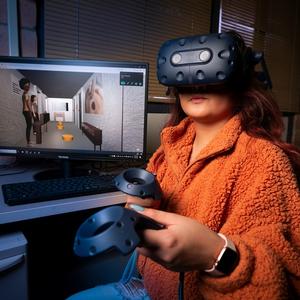

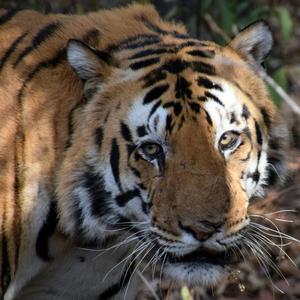
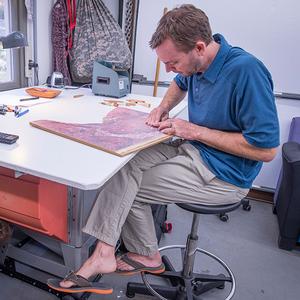
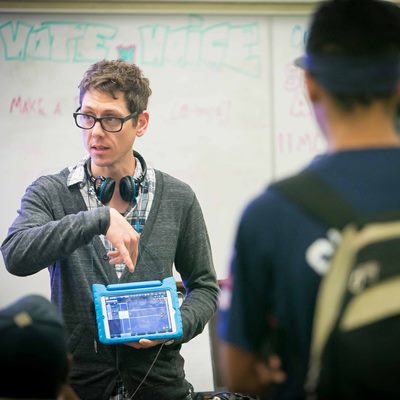
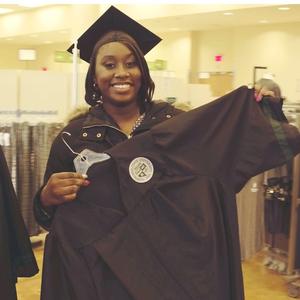

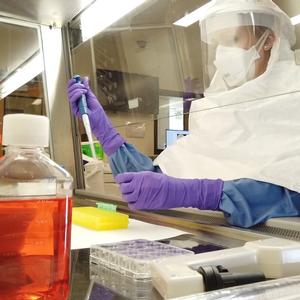
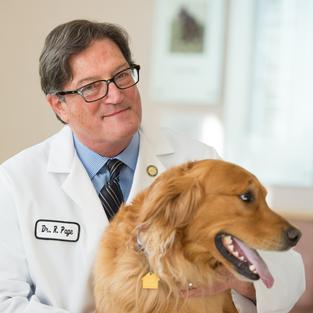

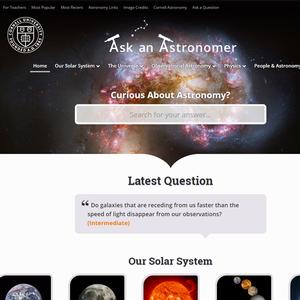


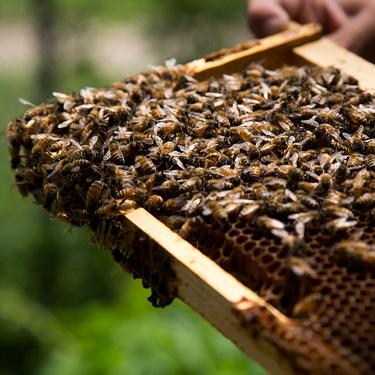
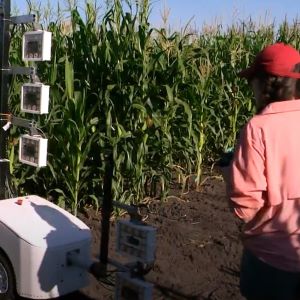
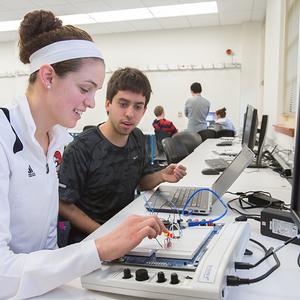

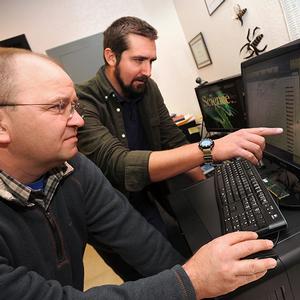
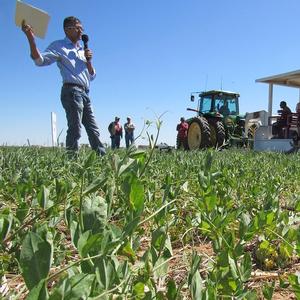
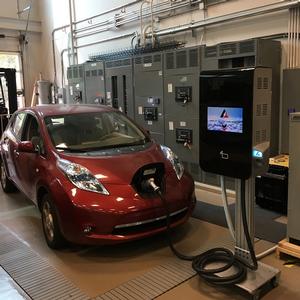
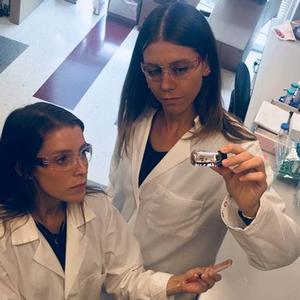
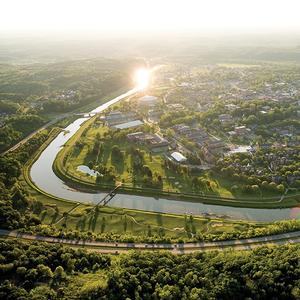
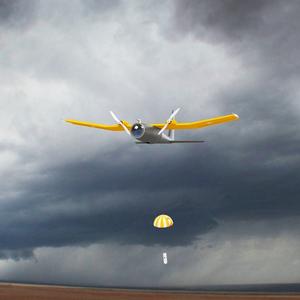

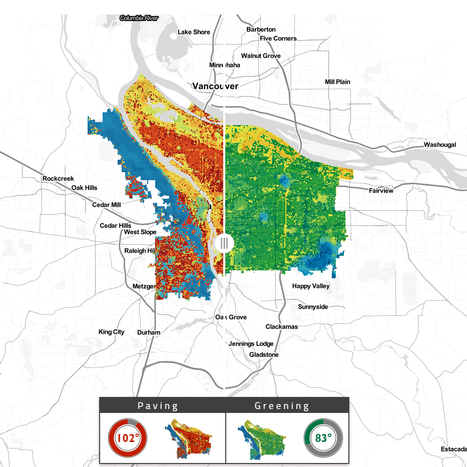
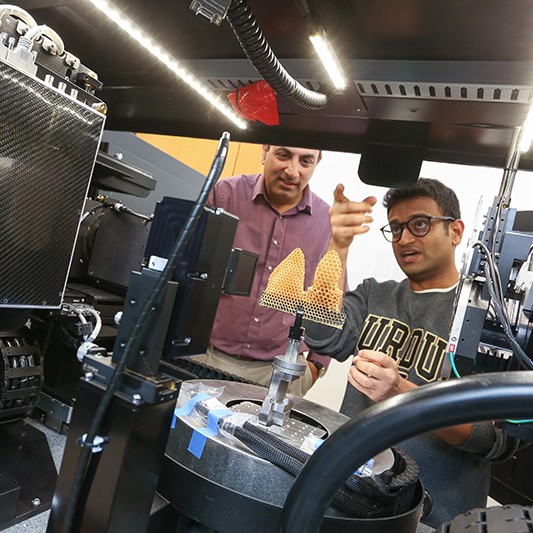
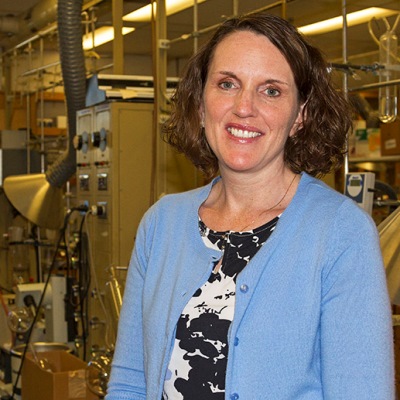


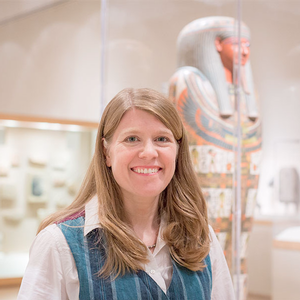
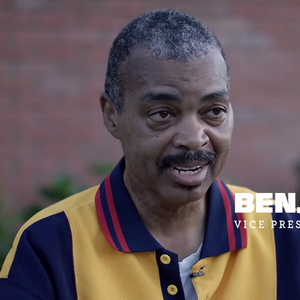


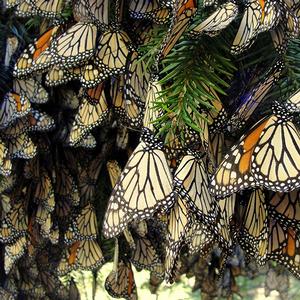
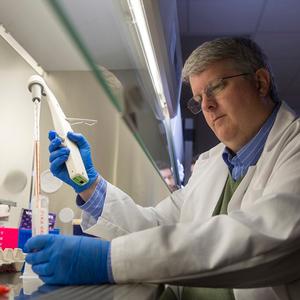
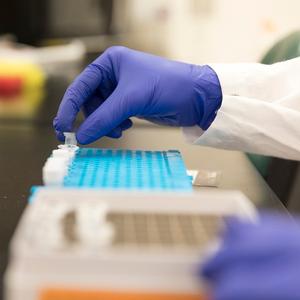
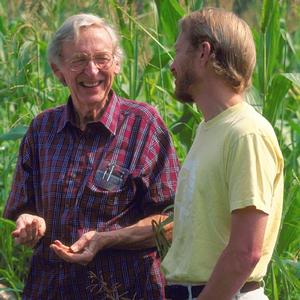
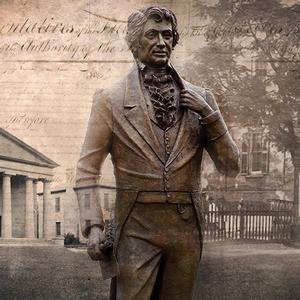
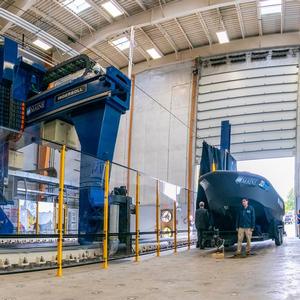
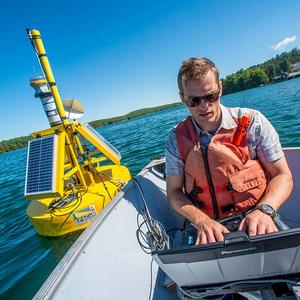
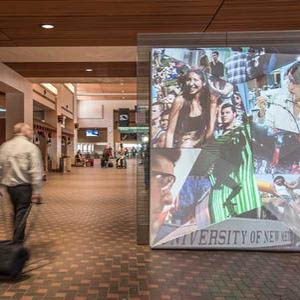
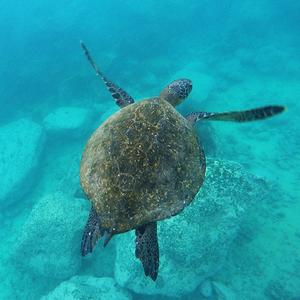
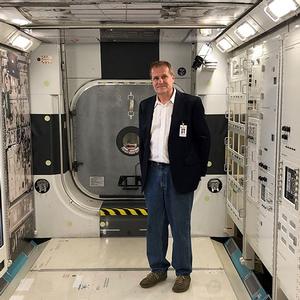


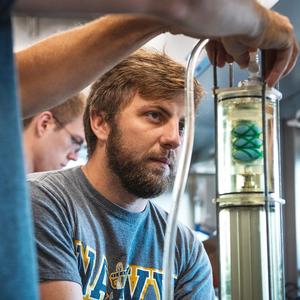

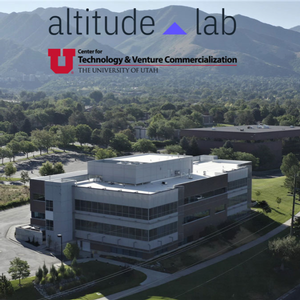
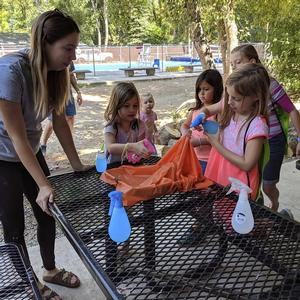
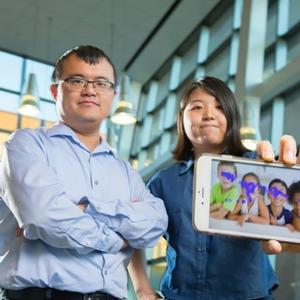

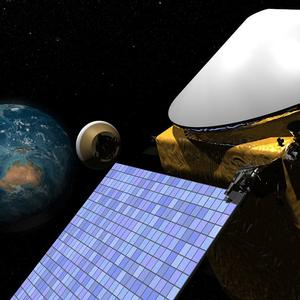
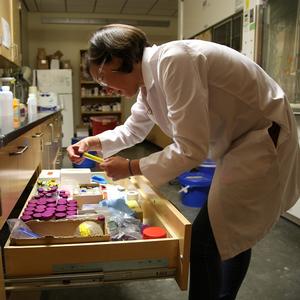
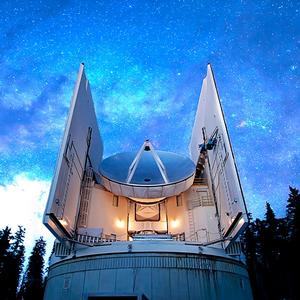
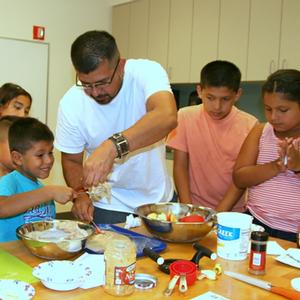

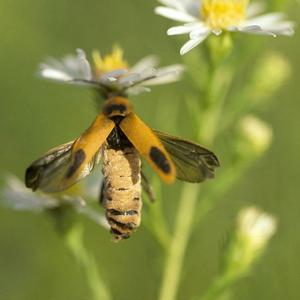


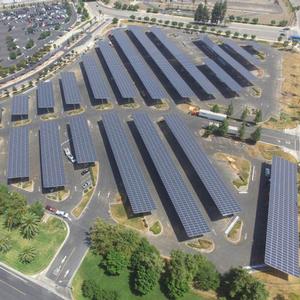
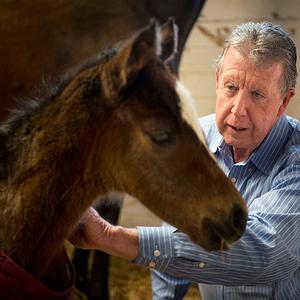
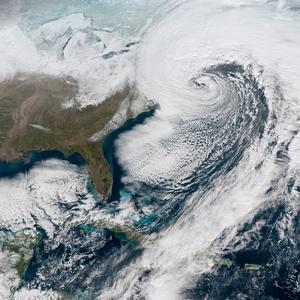

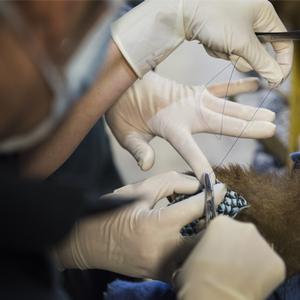

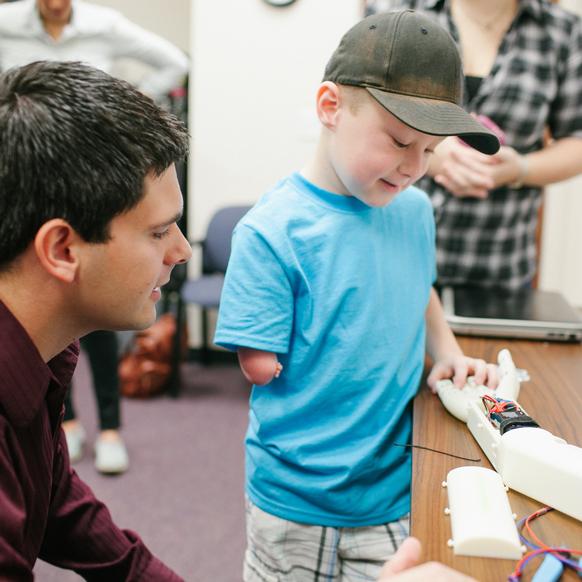
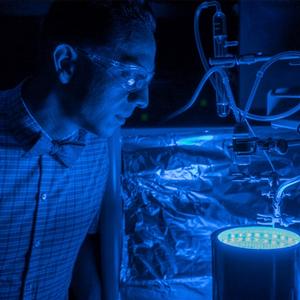


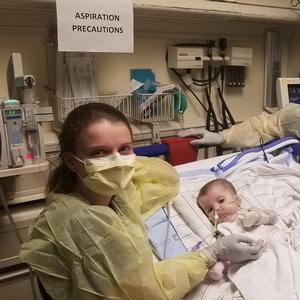

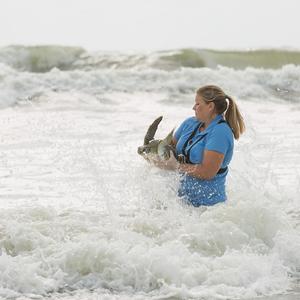

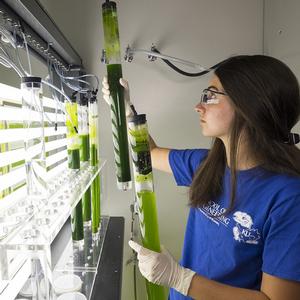

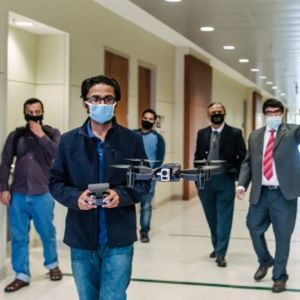

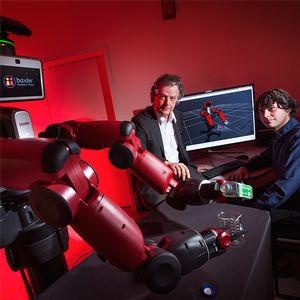
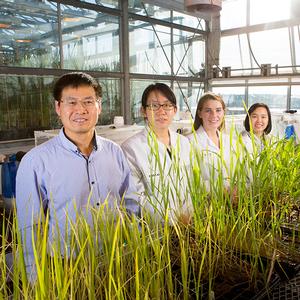
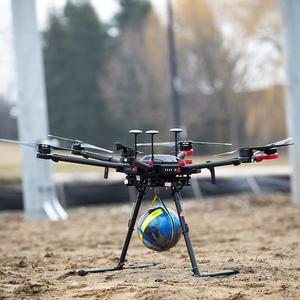





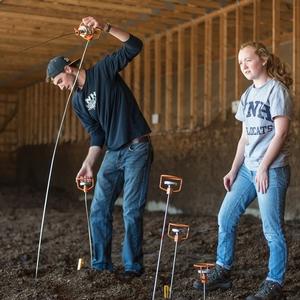
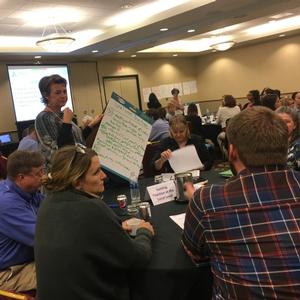


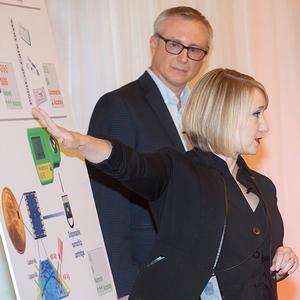
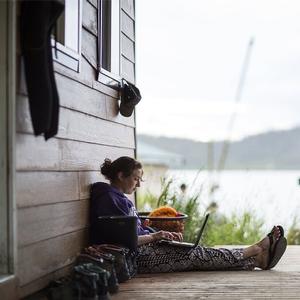
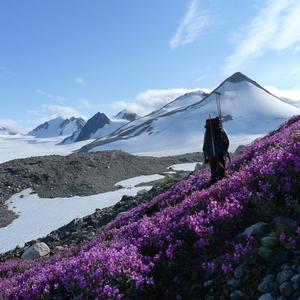
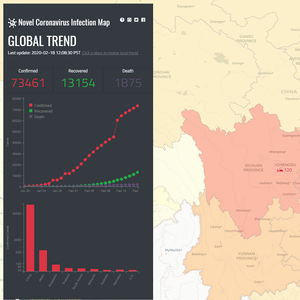
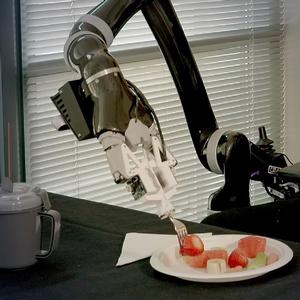
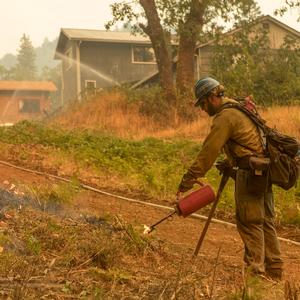
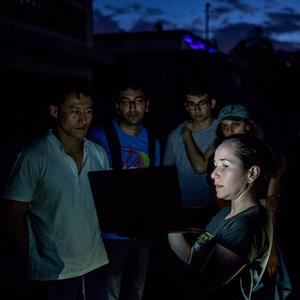
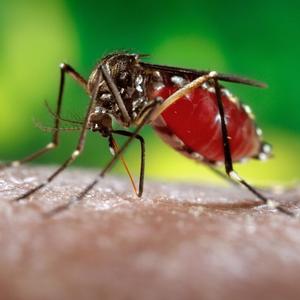
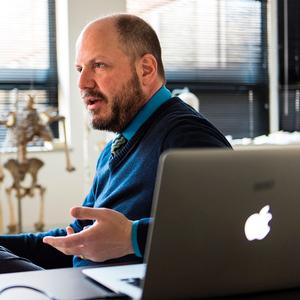
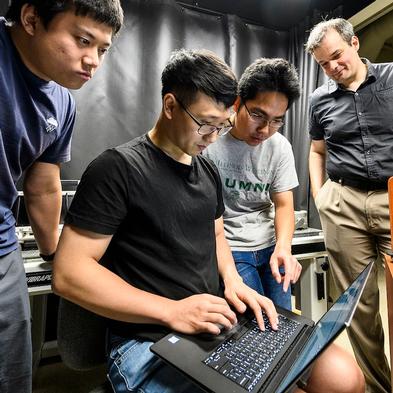
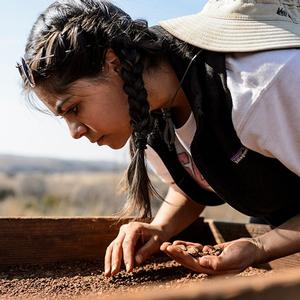

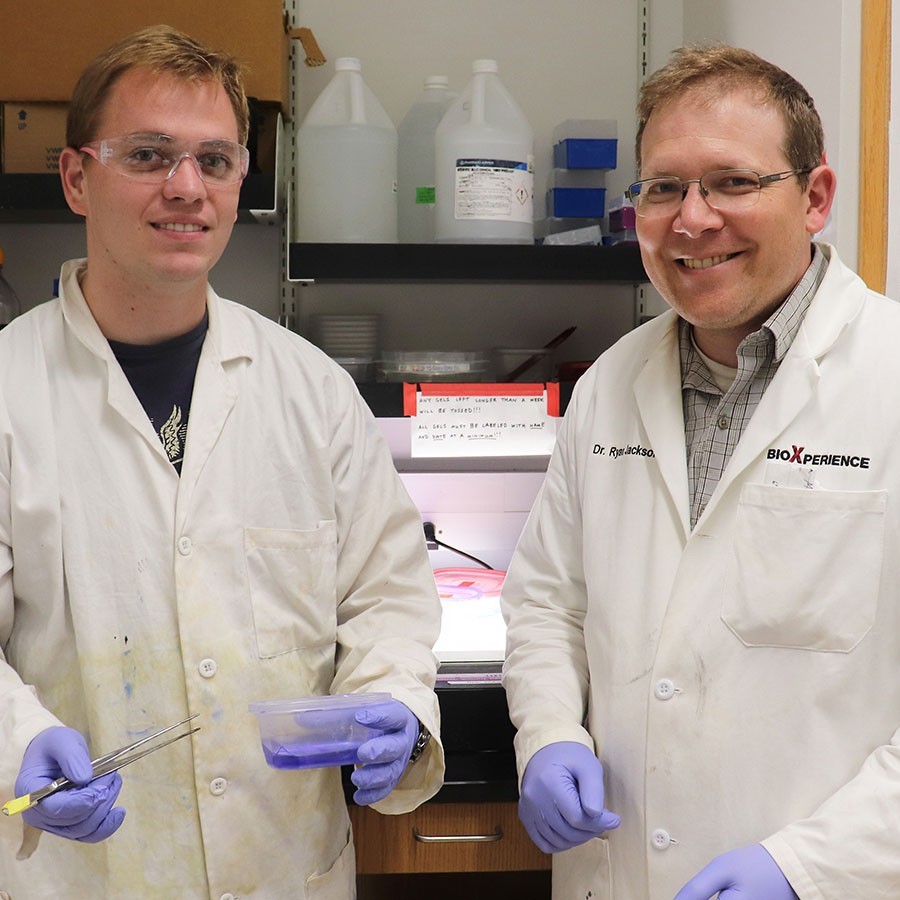
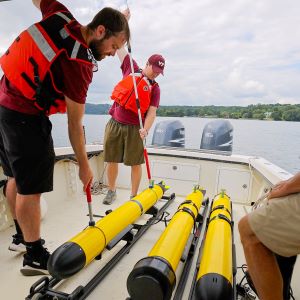
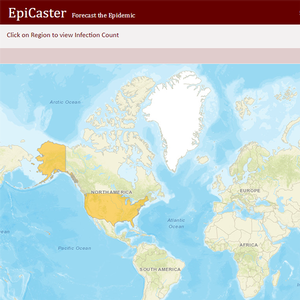
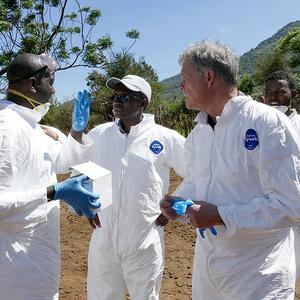


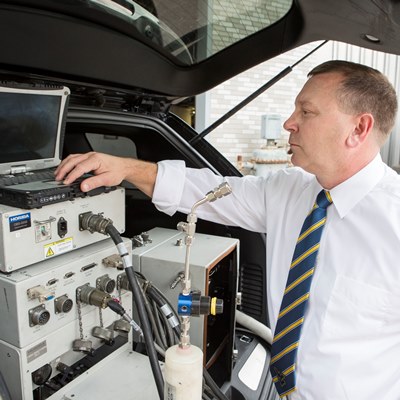

Stay Connected
X (formerly Twitter)
Facebook
YouTube
LinkedIn
RSS